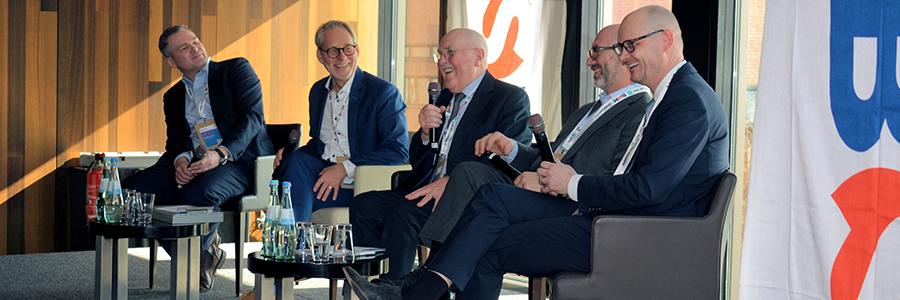The “BSM Ammonia Day” was held at the Empire Riverside Hotel in Hamburg, hosted by BSM in partnership with Lloyd’s Register. The Seminar brought together industry experts and ship operators to explore ammonia’s potential as a carbon-free shipping fuel to reduce greenhouse gas emissions as a vital step on the pathway to regulatory compliance.
Speakers and panellists represented Amon Maritime, Azane, SGMF, Lloyd’s Register, WinGD, MAN B&W, Wärtsilä, Alfa Laval, TGE, and Babcock-LGE. These experts shared insights into ammonia supply, storage, bunkering, engine manufacturing and availability, classification, and crew training.
“Many key issues were addressed. How is ammonia as a fuel supplied and handled on board? Can engines burn it? Is there sufficient training for the crew? How do we safely operate ammonia fuelled vessels? How can relevant stakeholders be reassured that ammonia fuelled vessels are safe to operate in port and at sea?” elaborated Nick Topham, Managing Director of BSM Germany. “The seminar enabled sceptical ship operators to talk directly to the speakers, both over coffee and by asking questions via the Slido app. The discussions were very constructive and illuminating,” he continued.
The key insights and takeaways from the event were:
Ammonia has been shipped in bulk for decades and is well-known in the gas sector.
Ammonia is widely used in agriculture, refrigeration, and chemical production. It has been transported as a bulk cargo since the 1960s and storage infrastructure is available in 130+ ports worldwide. However, it is not used yet as a fuel.
The opportunities to use ammonia fuel are new – but expanding rapidly.
Ammonia-fuelled vessels are rare today, so there is limited practical experience in handing this product as fuel. Only 27 cargo ships on order designed to use Ammonia fuel, though the 100+ “Very Large Ammonia Carriers” (VLACs) in the pipeline are mostly expected to be adapted to burn the cargo as fuel. By comparison, some 260+ LNG-powered vessels are on order now, with many more in service – which reflects the maturity in the LNG fuel supply industry. Speakers expect the rapid technological development from 2025 to accelerate the take-up, as will the development of the bunker supply infrastructure.
The technology is definitely there! There is progress on the infrastructure and training.
The main engine builders have developed ammonia-powered 2-stroke and 4-stroke engines over the past few years and have already run them successfully on the test beds. The engines are now in production, and the first fully ammonia-fired vessel is due for delivery in early 2026. Bunkering infrastructure is being developed in Norway, Singapore, Rotterdam and Hamburg. Existing ammonia-capable gas carriers could be converted to deliver NH3 bunkering quickly and at a much lower cost than the LNG bunker fleet - which had to be built from scratch at considerable expense. Training courses for ammonia fuel handling are also being developed, with the BSM Maritime Training Centres in the vanguard of these efforts.
“Green” ammonia will be used as a fuel – but the economics are not yet clear; however, regulatory compliance will certainly encourage the use.
Projects are under construction to produce “green” ammonia, and many of the new VLACs are intended to carry these new volumes. This rapid expansion is set to double the world ammonia production, which has been stagnant for some years even though not running at full installed capacity. This new production relies on renewable energy and will use known proven technology. However, the final cost of “green” ammonia is not clear yet – and this uncertainty is holding back investment to some extent. Unfortunately, the vast majority of ammonia is currently produced by the “Haber-Bosch Process” which emits significant amounts of greenhouse gases (GHGs) and uses natural gas (i.e. a “fossil fuel”) as feedstock. This so-called “grey” ammonia therefore does not comply with IMO GHG reduction requirements or FuelEU Maritime targets. However, it may be possible to reduce the GHG emissions from existing ammonia plants by fitting CO2 capture & storage technology; ammonia produced in this way is then referred to as "blue". It is clear that regulations will encourage the use of “green” ammonia fuel, and experts expect the market price will settle at somewhere near the energy content equivalent cost of MGO.

BSM Ammonia Day was hosted in partnership with Lloyd’s Register © BSM










